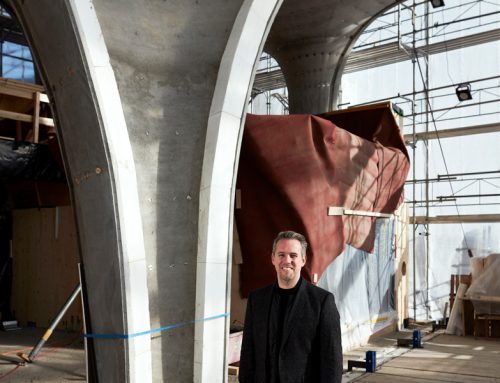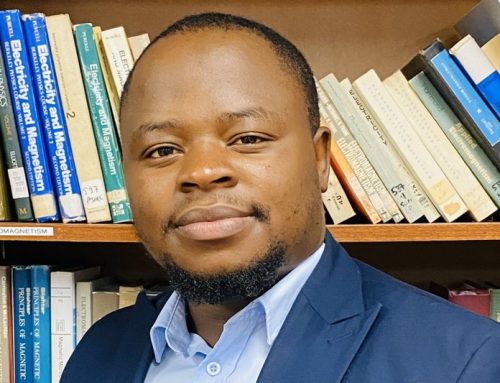It is not safe to build the proposed nuclear project at Thyspunt, and far more baseline research is required before any decisions should be made. These are the findings of a critical new research report released by the Africa Earth Observatory Network (AEON) institute at Nelson Mandela Metropolitan University (NMMU) in Port Elizabeth.

Based on hard scientific data, postgraduate research guided through AEON has shown the geology and geomorphology in and around Thyspunt (10kms west of St Francis Bay and 90km from Port Elizabeth) makes it high risk and irresponsible to build a nuclear power station at this site.
AEON’s NRF-A-rated scientist and a UK Chartered Geologist, Professor Maarten de Wit, explains:
“For more than three decades Eskom and national and international consultant teams have studied the rock foundations across the Thyspunt area and collected a vast amount of data to determine its geological, tectonic and environmental suitability to host a nuclear power-station here that can generate some 4000 MW.
“As part of this research, they drilled down over 270 times to see where the hard rock lies because nuclear power stations need to be built on the hard rock under the dune fields, below sea level. Based on their research they have said that Thyspunt is technically and environmentally safe for a nuclear plant.
“What they did not pick up, but which one of my postgraduate researchers has since meticulously detailed, is the presence of four ancient or palaeo canyons and valleys, cut into the hard bedrock at approximately 20m below sea level at Thyspunt, and the adjacent Tony’s Bay, Cape St Francis and St Francis.
“She has unequivocally shown that these canyons and valleys are hidden beneath the dune sands and soft sedimentary sequences, and that they extend inland well below the present day sea level. The Thyspunt palaeo-valley, for example, cuts into an area of more than 1000 m2 of bedrock to a depth of 16 m below sea level.”
What this means is that if you build a nuclear plant below sea level here, which it would be, you only need one earthquake causing a tsunami (these can be nine metres above sea level) or powerful storm waves or spring tides (these can reach over two metres) and, because of the presence of the canyons and valleys, Thyspunt is at great risk of flooding from below. With climate change, this risk can only increase.
De Wit emphasises that the risk of earthquakes and tsunamis needs to be regarded as a significant natural hazard in this region.
The most imminent threat of tsunami hazards along the South African coast comes from mega-earthquakes associated with the plate-boundary between the Indian Ocean and Southeast Asia from Indonesia to Burma and, especially for South Africa, flanking Sumatra and Java.
The devastating effects across the Indian Ocean of the 2004 Sumatra–Andaman tsunami, generated by a magnitude 9.2 earthquake was a rude re-awakening to the reality of tsunami hazard along the east coast of the African continent. Modelling shows that Port Elizabeth and Durban are particularly vulnerable to such tsunamis; the worst-case scenarios are based on ruptures along the full extent of seismogenic faults in the historical record.
While seismic noise has not been detected locally at Thyspunt, there is evidence of regional and far-field tectonic activity that should be evaluated far more seriously than has hitherto been acknowledged.
Another postgraduate researcher at NMMU recently revealed a surprising history of devastating local seismicity, reviving models of recurring seismic activity along so-called ‘dormant’ faults extending inland and seaward from Nelson Mandela Bay, which in turn may trigger submarine landslides and associated local tsunamis.
“An extensive fault system runs some 600 km along the Cape
Mountains from Ceres via Kango and Baviaanskloof to Coega, and offshore to St Croix Island in Algoa Bay, Eastern Cape; and then an additional 113 km along the St Croix Fault. Past faulting along this fault system suggests that the entire south-eastern coast could be considered vulnerable to its future seismic events,” says de Wit.
AEON’s report confirms that palaeo-seismic data is a necessity for seismic hazard analyses before building a nuclear power station at Thyspunt. It will also be necessary to monitor submarine seismic noise through the deployment of ocean bottom seismometers that onshore recording stations cannot detect in the southwestern Indian Ocean. Such data is clearly required to assess potential flooding of the Thyspunt area.
The new research further implies that the hazard for the southern to south-eastern Cape should now be upgraded, to include 7.2 magnitude seismic events. If in future, for example, an earthquake of this magnitude or more occurs along the extended St Croix Fault offshore, it is likely to generate a large submarine slump, and a possible significant local tsunami that would affect the coastal region, including Thyspunt.
De Wit states: “Based on this AEON/NMMU research, it would be irresponsible to even consider building a nuclear power station at Thyspunt without investing in further, substantive baseline research.
“At this stage the research that Eskom and the government has undertaken is inadequate and the risk factor is huge; it could literally become a Fukushima, prone to flooding from below. Thyspunt would require the most cutting-edge, innovative technology to contain its core, including the construction of a vast wall or dyke along the coast, which is still no guarantee of protection in the case of natural calamities that we might reasonably expect during the life span of a nuclear power station as planned.”
Making decisions based on hazards is not simple. The 2011 Fukushima disaster was caused by natural phenomena that challenged the technology and the technology was not good enough. For example, there were no special domes or core catchers to contain the core in event of a meltdown. So there are natural hazards and engineering hazards. After this disaster, new standards now require cutting-edge technology in new generation plants.
Yet Eskom has declared they can afford to have new nuclear power stations built, provided they do not introduce the new, cutting-edge standards being implemented elsewhere after the Fukushima disaster.
“If South Africa cannot afford the best cutting-edge technology and if we do not undertake the required, additional baseline research, then we must not do it,” says de Wit.
“What we need now is transparent stakeholder discussions between as to what is best for not only Thyspunt but South Africa’s entire energy mix, instead of relying on a small technical group at Eskom that won’t release all the nuclear research data.
“The public has a right to be concerned about Thyspunt. What in fact do we really know about this site beyond Eskom hearsay? Who has access to all the data on which decisions will be made to comply with the evolving National Nuclear Regulator (NNR) processes? Are the real issues of the danger of nuclear sites such as Thyspunt being glossed over? Can safety at Thyspunt be guaranteed?”
The AEON report titled ‘Geo-Realities @ Thyspunt’ is available on the AEON website http://aeon.org.za/aeon-publication-series/
For enquires and/or a hard copy of the report, email: aeonafrica@gmail.com




